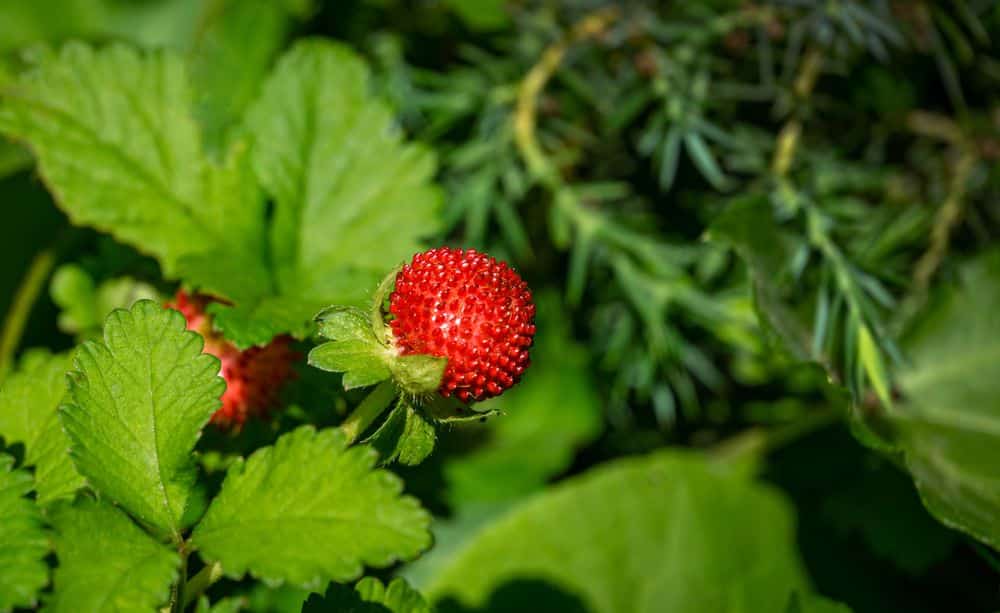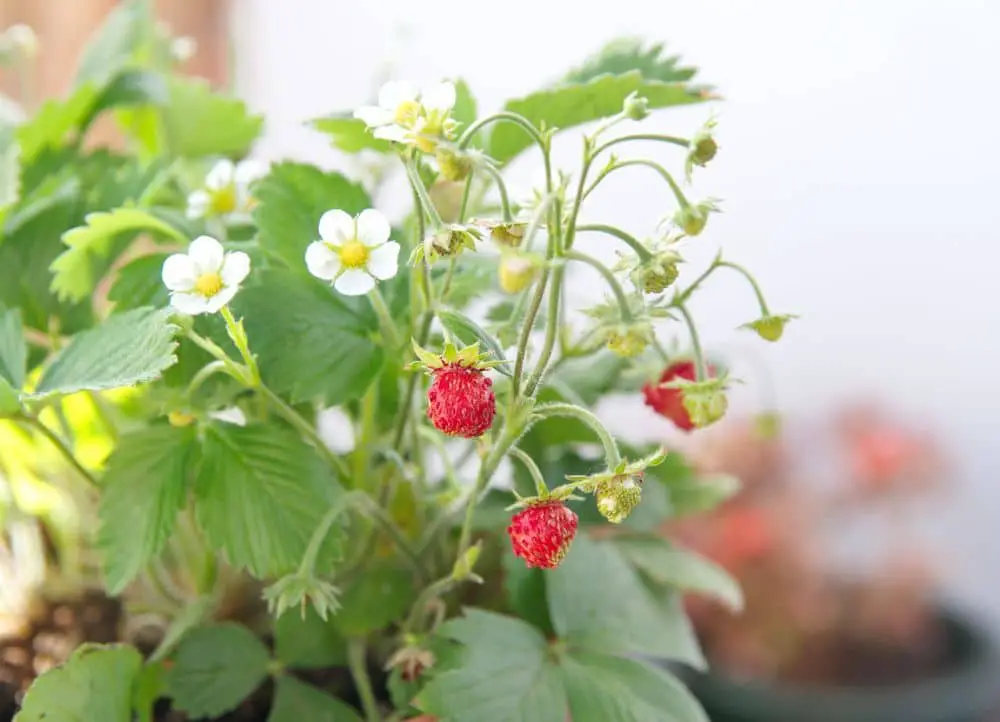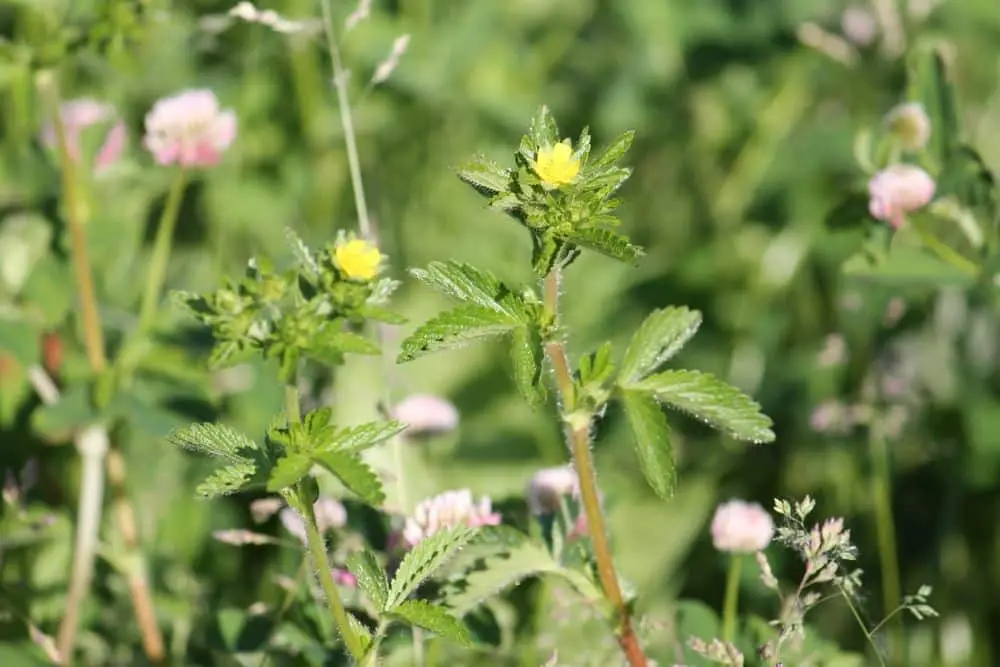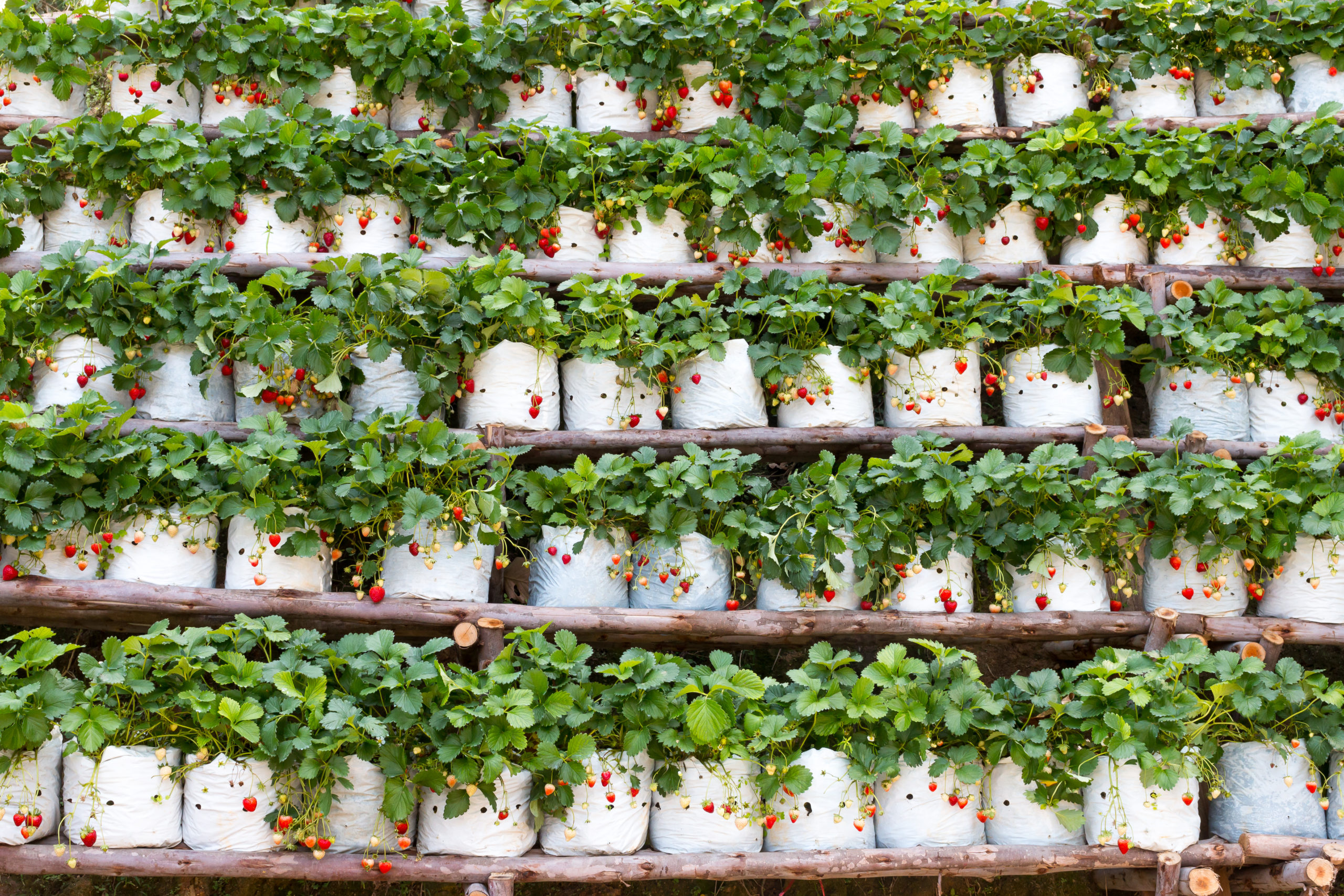When strolling through a field or forest, you might see some plants that look similar to strawberries, but you know they aren’t.
Some seem at least related to the cultivated fruit. In contrast, others have such an uncanny likeness that their common names include the word.
4 Weeds That Look Like Strawberries
- Wild Strawberries
- Mock Strawberries
- Wood Strawberries
- Cinquefoils
The weeds that seem like strawberries may be from an entirely different plant family, but it is also possible that they belong to the same family. Examine each of the items listed below:
1. The Wild Strawberries

Wild strawberries can be found throughout the United States and Canada. They feature white flowers with yellow centres and the three-lobed, round-toothed leaves characteristic of strawberry plants.
They may grow to a height of around 6 inches and thrive in dry environments that are sunny or somewhat sheltered. They will be found in open fields or on the periphery of woody regions.
2. The Mock Strawberries

Mock strawberries, also known as Duchesnea indica (syn. Fragaria indica), are identical to cultivated and wild strawberries in every way except for the colour of their blossoms, which are yellow rather than white.
Similarly to real strawberries, Mock strawberries propagate by runners and have serrated, trifoliate leaves that are distinctive from actual strawberry plants.
They even produce fruit that is seeded and crimson in colour. These fruits are not dangerous, although their flavour is not very memorable.
It is possible to come across natural fields of mock strawberries. But these plants are also cultivated as a ground cover in USDA plant hardiness zones ranging from 5 to
3. The Wood Strawberries

A near relative of the more well-known strawberry is the wood strawberry, commonly referred to as the California strawberry and belongs to the genus Fragaria.
Its serrated trifoliate leaves are present on wood strawberries, just as they are on garden strawberries. The blooms are typically white, although their centres may sometimes be yellow.
According to the USDA plant hardiness zone map, wood strawberries are a kind of ground cover that may be grown in zones 5 through 9.
Some varieties yield fruit with a desirable flavour, but the natural forms are not sought after for their edible qualities.
This ground cover is not listed as an invasive plant in California, but it might become a serious issue if its roots are not frequently removed.
4. The Cinquefoils

Cinquefoils are sometimes referred to as barren strawberries because of their appearance, somewhat like strawberries.
The blossoms on these plants are yellow and do not produce strawberry fruit. The Strawberry weed is a variety of cinquefoil that is often referred to as the Norwegian cinquefoil.
It may be found growing in all parts of the United States and Canada. It has trifoliate leaves that have round teeth and are similar in appearance to the leaves of the strawberry plant.
They may reach heights of up to three feet and are characterised by the presence of yellow blooms.
The common cinquefoil is a different kind of cinquefoil, and the only place in the United States where you may find it is in the east. One notable distinction is that its leaves are divided into five segments rather than three.
On the other hand, this plant resembles a strawberry plant in its overall form.
When they are in flower, cinquefoils may be distinguished from other plants the best. The fact that they have yellow blossoms should tip you off that you are not looking at strawberries.
However, if they produce fruits, they are not edible and have a round shape rather than a heart.
How To Identify the Imposter Plants
Some have leaves that mimic the strawberries, while others also yield fruit. However, they all have those characteristic leaves, which may encourage you to stoop down and search for some tasty strawberries to munch.
Unfortunately, the “berries” may be weeds that seem like berries. You are not going to receive any berries from these weeds, and some of them also spread quickly.
The trespasser plants can be identified after a thorough investigation.
To recognise weeds, you first need to be familiar with the appearance of the real thing.
They have leaves at the very bottom of the plant, called basal leaves, and each stem has three leaflets. The edges are cut in a zigzag pattern. Flowers are typically white, with five to eight petals and a centre that ranges in colour from ivory to cream.
The fruits may be identified by their colour and form, which resembles a heart, and by the very few surface seeds. Runners are the offshoots that allow the plants to expand.
Why is it Important to Get Rid of These Weeds?
Although some individuals use these plants as groundcovers, most choose not to employ them in favour of alternative options.
These weeds are generally invasive, particularly the mimic strawberries and the wood strawberries. They do this by sending out “runners,” which swiftly take root and establish new plants.
This makes it easy for them to take over a flower or garden area. They are also capable of flourishing in lawn environments.
They cannot tolerate the stress they cause fragile plants, although they could be OK in a shrubbery bed.
You may pull them by hand or use a herbicide to eliminate these weeds.
There is also the option of covering them with thick plastic and allowing the sun to bake them through the plastic over a week.
After that, rake them up and remove every portion of them, all the way down to the roots.
You may also pluck them out by hand, burn the trash or put it in bags to throw away afterwards.
Beware! They are likely to take root and begin growing in your compost pile, which means that you will not be able to compost them due to this risk.
What is a Strawberry?

Strawberries are perennial plants that may thrive in climates ranging from 3 to 11.
Basal leaves are stems with three leaflets positioned at the bottom of the plant.
These are the leaves that are referred to as basal leaves. The leaves have teeth around the margins, and the blossoms are often a pure white.
The centre of each flower is coloured ivory, with five and eight petals around it. You can identify them as strawberries once they begin to produce fruit. They have the form of a heart and have several seeds on the surface.
Runners, also known as offshoots, and they allow the plants to propagate and spread.
Final Thoughts on the 4 Weeds That Look Like Strawberries
Forewarned is forearmed, and now you know the phonies, you know what to do.
Once all danger of frost has gone in the spring, you may begin planting strawberries in your garden.
They will produce flowers the following year throughout the spring and then fruit from the end of spring until the beginning of summer.
The blooms are often removed during the first year of the plant’s life to direct the plant’s energy into development rather than blossoming.
In this manner, it will be prepared to bear fruit the following year once it receives adequate care.
Enjoy those Strawberries – they’re so good for your health! Spread the Love.
Read More:
Kiwi Strawberries – Real Or Not?
How to Grow Strawberries In Aquaponics – Expert Secrets Revealed!
